|
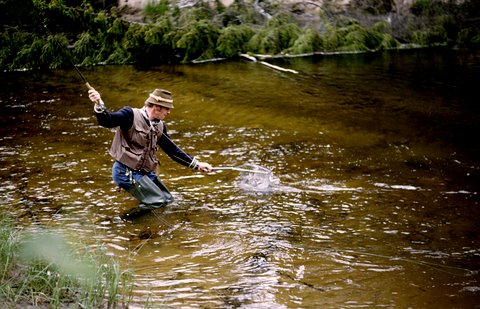
It is an
undeniable fact that certain fishermen normally catch more fish than others.
Not many more, perhaps two or three a day. The reasons for that are several,
but the choice of fly is important, sometimes absolutely essential. Not all
successful flies are born out of a logical thought, but quite often, there
is a well-founded idea behind the pattern. This is the story of the first
Muddler.
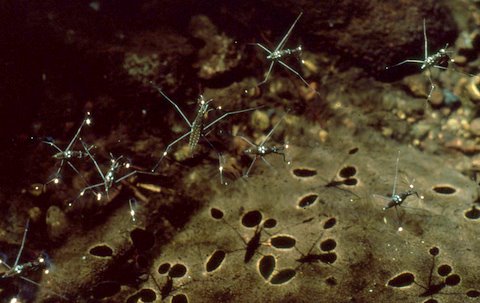
In 1948, Don
Gapen guide and fly tier from Anoka, Minnesota, was on a fishing trip in
Canada. The place was Nipigon River in the state of Ontario. One night,
walking along the river, he met a group of Indians of the Ojibway tribe.
They carried lanterns, and asked about their errand they explained that they
were after a certain fish to use for bait.
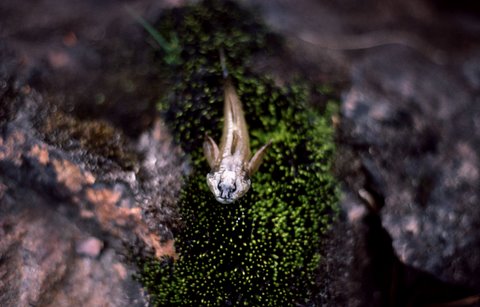
Paralyzed by
the strong light the tiny creatures were speared with the help of ordinary
table forks. One of the Indians showed his catch, a little bullhead named
Muddler by the locals. The best bait for big trout, he claimed. The bullhead
in the picture is for obvious reasons not from Nipigon River, but from one
of my woodland streams.
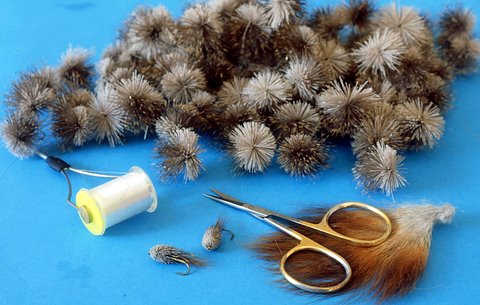
Don asked
for a specimen and returning home, he placed the fish on his workbench in
order to create an imitation. For the big head, he chose body fur from deer
that gave the volume he wanted to attain. The world's first Muddler was bushy
creation with a rather crude head and a wing where two sections of turkey
feather sections encircled a bunch of straggling wolf’s hair.
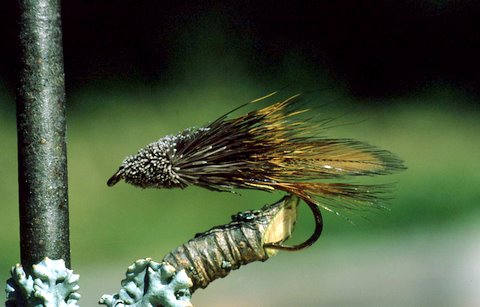
In spite of
the peculiar appearance, the fly was a success from the start. Don Gapen
found that it not only had a strong attraction to fish of the salmon
species. Also bass, walleye, pike, grayling and divers types of so-called
sunfish responded to the pattern. Even salt-water fish like snook, bonefish,
bonito and shark were caught on Muddlers.
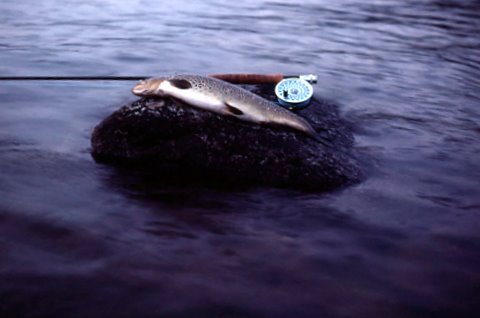
Within a
short time, the Muddler became enormously popular in the US, but it took a
long time before it was appreciated in Sweden. When Nils Färnström, in the
beginning of the 1960's, made a fishing trip to Kashmir he was advised by
his “shikaris” to use a Muddler, which they regarded almost infallible. That
same year Nils, with no intention to use them for fishing, had bought a few
Muddlers mostly as curios.

From the birth at shores of Nipigon River, the Muddler family has grown
continually. Hundreds of variants, more and less successful, have seen the
light of day. The one thing they all have in common is the trimmed head made
of deer hair. In different sizes, a Muddler probably can represent a whole
lot of edibles. Under the surface small fry or large nymphs, on the surface
grasshoppers or big sedges (caddies).

The Muddler,
originally aimed at imitating a bottom-hugging bullhead, is nowadays often
used as a top water attractor fly. It is especially popular at our
put-and-take fisheries. Slowly slided along a smooth water surface the
Muddler has a great ability to induce takes from sluggish trout or rainbows
on a warm summer’s evening.

My own
favorite Muddler has few similarities with Don Gapen’s original. The body is
flat golden tinsel, the head is deer hair and tail and wing are hairs from
Swedish or Siberian squirrel’s tail. For practical reasons I mostly use
squirrel’s tail hairs for my Muddlers instead of the rather delicate turkey
feather sections.
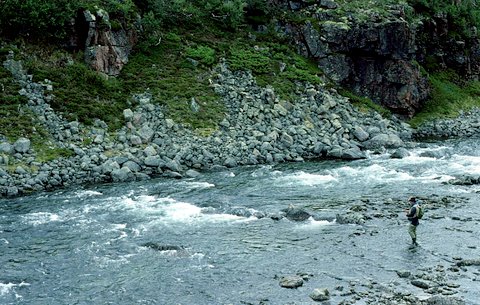
This is a
stream section well suited for fishing the Muddler. Fished down and across,
slided over smother water between white-water necks, it is sometimes very
effective. Your answer has to be fast, since the take is usually indicated
only by a glimpse.
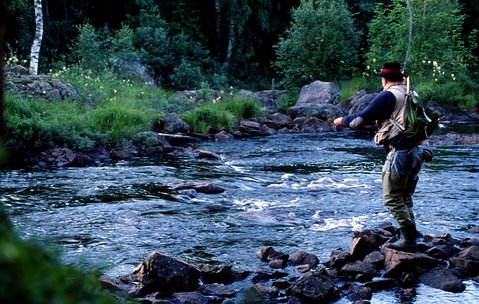
Fishing a
Muddler is exciting. The take is violent and most of the time unexpected,
since there are no rises and other signs that fish are around. I am sure
that many a fly fisherman has regretted not having exchanged his leader for
a stronger one.
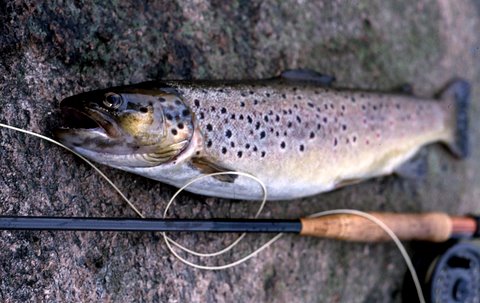
This lovely
trout fell for my Muddler towards evening after blank day. Judged by its
shape he has had a good life in his restricted environment, a dark pool
shaded by a dense pine forest.

A Muddler,
which unlike the previous ones always is used as a subsurface fly. It is
called Spuddler and has a conical head for easy entrance into the water. The
wing consists of two cock hackle feathers, the dull sides against each other
with a thin bunch of squirrel’s tail hair in between.
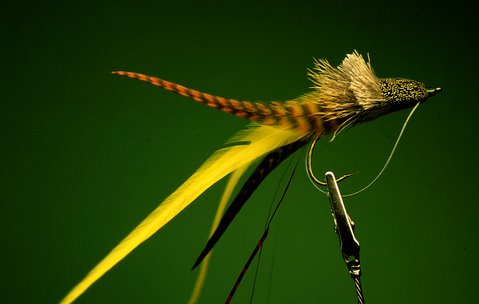
Dahlberg’s Diver, not exactly a Muddler but related to the Spuddler. The
head is trimmed into a half cone, sporting a collar which makes the fly dive
when you give it a sharp tug. I use this fly exclusively for pike.

Here is a
salmon fly pattern I got from Erling Olsen, Norwegian fly tier and writer.
Hook: LW, double or Mustad limerick 1/0 – 2. Tail: Pheasant feather fibers.
Ribbing: Oval tinsel, Veniard size 15 silver. Underwing: Brown squirrel’s
tail hairs mixed with a bunch of pheasant feather fibers and Lureflash,
silver. Head/wing: Grey or brown deer hair.
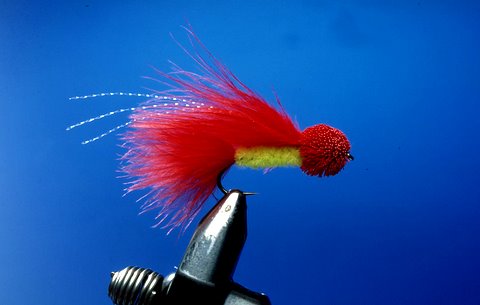
Deer hair is
often used as a group name for many types of hairs, all with their own
characteristics. Personally, I like to use a domestic material for my
Muddlers, namely winter pelt from raw-deer. A cheap material especially if
you have a hunter among your friends. A layer of salt on the raw side of the
pelt, two days to dry and material for hundreds of Muddlers is ready.

In my old
fishing diary I read: ” Everything was against me. Intensely cold, water
much too high. Time and time again my flies drifted past spots known to hold
fish. Nothing. Ready to give up I tied on a Muddler. It floated like a cork,
danced across the rippling waves on its way to the shore and all of a sudden
the stream came alive. Fish after fish shot up snatching for the fly….”
Happy Muddler fishing!
|

















